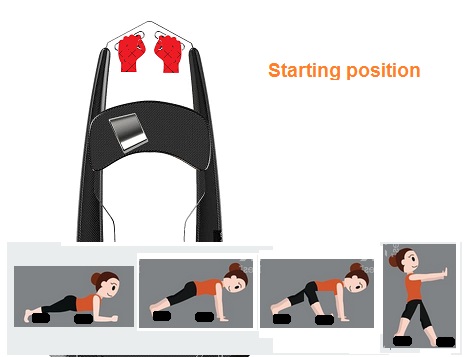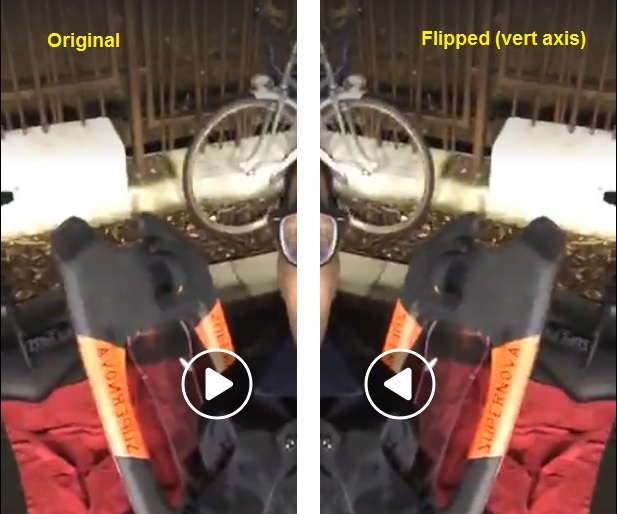Mark seems great at making carbon composite parts but besides that a bit delusional. Still interested to see what comes out of it.
No badge , no name , you cannot go through security like that , probably the case is empty (?)
That makes a nice chair , a bit bigger that on the first pic , but yes the case is probably 15kg …
No in another video he shows the prototype. But no details. Still strange.
It’s a shame that such interesting ideas are destroyed by such behavior.
Best regards Frank
Why he is doing that ?
He is probably very skilled with carbon why he would not make a nice board for us ?
Where’s this video? Any screenshots?
Can you see it here?
From the Supernova FB main page:
A few remarks:
1- A WIFI issue ? Everybody is on 4G today and at 6pm we can be sure the data links are nearly empty. The fact is we can see Mark permanently on the alert on the 3 short videos. Seems he’s been playing cat and mouse with the security guards who asked him to quit. They would not give him enough time to promote his brand and film a relaxed video.
2 - Why decreasing the brand visibility by flipping the image ? One needs to deliberately apply a filter/setting to do that 
3 - Seems to me that the foil which is deliberately hidden but partially visible is not the one we were promised to be shown. We didn’t see “her” in real life today.

Nevertheless, I am still 50/50 on the success. We can see that Mark has just avoided the crash today with a fair/passable performance. Showing the full product on December 25th is easy, showing a working efoil is not yet won. It’s in 12 days time.
Of course he never had a stand. He has nothing to do with Mercury and any of those guys. Mark is a first class bull#£&* talker. Nothing he’s said this far has been true.
He’s got some skills with composites and used to work for a company called MH Composites. Bit other than that his ideas are too far out and aren’t logical so will always fail.
What happens if a user misplaces their foot on that board and it goes through the gap? Broken ankles and legs and even potential to hit your own prop.
Futuristic designs can be fun, but they also need to be practical and have some degree of safety.
I can’t wait to see him ride that board!
My idea is that this should not happen as your feet should never quit their foot-hooks. It needs to be a new practice as unimaginable as kiteboarding was in 1998-2000 for wannabees coming from a windsurfing background.
I don’t know if you’re a kiteboarder but, my idea is that on this no volume board you:
1 - place the board on its side to be able to place your feet in the foot-hooks (btw footstraps in the present vid),
2 - grasp one or both rails
3 - place your center of gravity above the board to sink it,
4 - press the trigger
5 - the GBS comes into action controls the board and allows you to stand up vertically on the board
And then you fly…
You will have understood that I have just described a lateral “waterstart” not imaginable with current boards and IF he succeeds it is the beginning of a new era and will be massively copied by competitors a few days after demonstrating it was possible.
Then LIFT, Flite et al will all say “Yes, yes, yes, we had been working on a similar idea  ” and this is… our 3D project "
” and this is… our 3D project "
Bad science fiction you called it: the 3rd step which is a disruptive practice is only possible with a no volume board.
If we assume sinked motor with tons of drag has imaginary powerful motor that can get to required torque to push board and the person to foiling point while not sinking the person at the same time initially, still There’s one issue with sinked board, Your radio will have no reception while it is sinked! unless you use harnessed remote
Or you program a 2 second delayed start: you press the remote trigger, you sink the board and 2 seconds later, the motor starts on its own and the radio link reconnects when the board sees the surface. Requires a good synchronisation (muscle memory) between board and rider.
A kiteboarder routine practice: during the first training hour, a kiteboarder has to learn a similar scenario between board placement (downwind) and kite going down.
I agree these are technical problems to resolve I am wondering if a strapped sinked board could become a danger and sink the person depending on rider weight and how much floatation board will provide
It is surprising how much a kiteboarding twintip as big and thick as two Mac Donald plates can lift you out of the water with a bit of speed …
In water: L = (1/2) . 1000 . v^2 . s . CL
- L = created lift, which must equal the mobile (rider + board) weight
- 1000 = density of the water.
- v = velocity of the Mc Donald tray
- s = the wing area of the surface
- CL = Coefficient of lift , which is determined by the type of airfoil and angle of attack.
Hahaha, what you’ve described is the standard start for experienced wakesurfers and wakefoilers. But here again the lack of experience on an efoil shows through.
As Sami has pointed out. You’ll have issues with:
- motor power
- remote signal (and no delay will ever work because no one can guarantee when they will be ready to start after submerging the board)
- waterproofing will need to be even better because the motor is now 2m underwater and the board 1m under.
- footstraps also present other issues like not everyone has the same stance and foot spacing.
You really need to stop comparing kiteboarding. The only minor similarity is that sometimes kiters ride on a foil. Other than that there’s no similarity. Your weight distribution is different, your stance is different, your power generation is different, your start techniques are different.
If you want to compare something, try a submerged start with a wingfoil…
You’re stuck in a traditional system and can’t imagine this possible one closer to the kitesurfing world than the wakesurfing one and rather far away from the current efoil one (starting phase only). With soft footstraps, it should even be possible to start in a classical way, rider lying on board rear then knees on board at slow speed.
A motor that can lift a rider plus tow a second foil will be the correct candidate (LIFT, FR, 80100, TPPower + gear, possibly Peter’s motor … to name a few) Plus you’re forgetting that a sinked board has 1+m x 0.4m = 4000cm2 plus the 1000cm2 of the foil that’s 5000cm2. That hybrid vessel will create enough lift at a 2 knot speed.
It is just a question of anticipation. You won’t be able to reach such depth with 5000cm2 of underwater lifting surface. When making the board tilt on its roll axis, the initial speed plus the huge lifting surface of the board will hardly make the board sink. That’s what happens in kitesurfing, after just a few hours of practice, you throw the kite with so much speed that your (tiny) board doesn’t sink at all. But how could you know, you’re not a kitesurfer nor a kitefoiler. 
Bad comparison, a wingfoil doesn’t create its initial grunt as a moving kite or motor does. That is why current wingfoilers need at least 20 knots to start being at ease (30 knots for beginners) with 5sqm wings. Today (but not tomorrow as gear will evolve) a cruel sport as beginners need the worst and most unpleasant sea conditions (chop, wind, …). I think that, for a beginner, it should be easier to waterstart with a GBS-assisted Supernova than a wingfoil board.
If you were a kitesurfer(foiler), waker, you would know that straps are adjusted on the ground one for all. They correspond to your shoulders’width. Should you have 5 different riders, you either don’t mount any rear footstrap or mount a second rear one, to address 95% of the population. That’s as simple as that 
Of course, this is only possible providing Mark didn’t exaggerate his battery/motor/GBS specs.
Well, all of those things mentioned are doable, maybe a huge PIA (wired remote, less battery runtime, much much more expensive) and still some years ahead (to research and bring it to mass production) but in general doable.
The only thing which (IMHO) can’t be done in this design is water starting. How do you control the pitch momentum made by the motor and the drag of the rider/board? They both point in the same rotary direction. If your board floats, it is easy: move to the front; but with the board under water you can only make it worse.
Also when starting you have no speed, so no matter how good your wings are tiltable, you can not control the pitch axis by wings. Doing it by motor power obviously wont work either.
So either I am overseeing something crucial, or you need to lay on the board to get it started, then stand up and get your foots into the hooks at the same time, also not stepping from this super tiny board/standing area and still hold balance.
Not seeing this happen, at least not with the current design super low volume, low standing area.
Also I don’t think this topic is to bash the “vendor”/inventor/whatever on a personal level.
Question the design and the technical aspects on a scientific level instead of insulting him…everything else makes you look stupid.
I just looked at the board, and noticed the 2 handles that make the laying thesis most credible. I tried it on a carpet simulating a 1m long board. you can grasp two fixed points, knee on the floor, put your feet in the “footstraps” with straight legs without removing your two hands from the floor then stand up. Let’s not look any further, no kiteboarding/wakeboarding skill required. Just amazing !

It is amazing how the lowest speeds can provide lift to a reasonable surface on water. If I remember correctly @waterfox started efoiling on a 40litre kitefoil board. Not easy to start with but all the easier as the board is wide and fitted with footstraps.
This should be our only course of action.
the video on Facebook of the presentation at the boat show is very funny as well as the one made on the outside after being probably kicked out 
I’haven’t good skills with electronics and propulsion but the Concept of board’s shape look completely useless and complex to use easily 
The plexiglass panel is certainly as slippery as soap, it would need wax, the holes between the donut (  ) of the board and the plexiglass I think are very dangerous having the space for make it easy to get one or two feet and I don’t think it’s as easy to get them out if the board is departed.
) of the board and the plexiglass I think are very dangerous having the space for make it easy to get one or two feet and I don’t think it’s as easy to get them out if the board is departed.
Seeing that the manufacturer seems to have good skills with composite materials, I just can’t understand the reason to replace the two portions of classic lamination in carbon and foam inside with a plexiglass plate that will weigh at least 5/6 times the weight of the lamination and of the interior, renouncing to a big planing surface in phase of departure very useful to any electric foil.
I’m curious to see any changes, if ever there will be 


